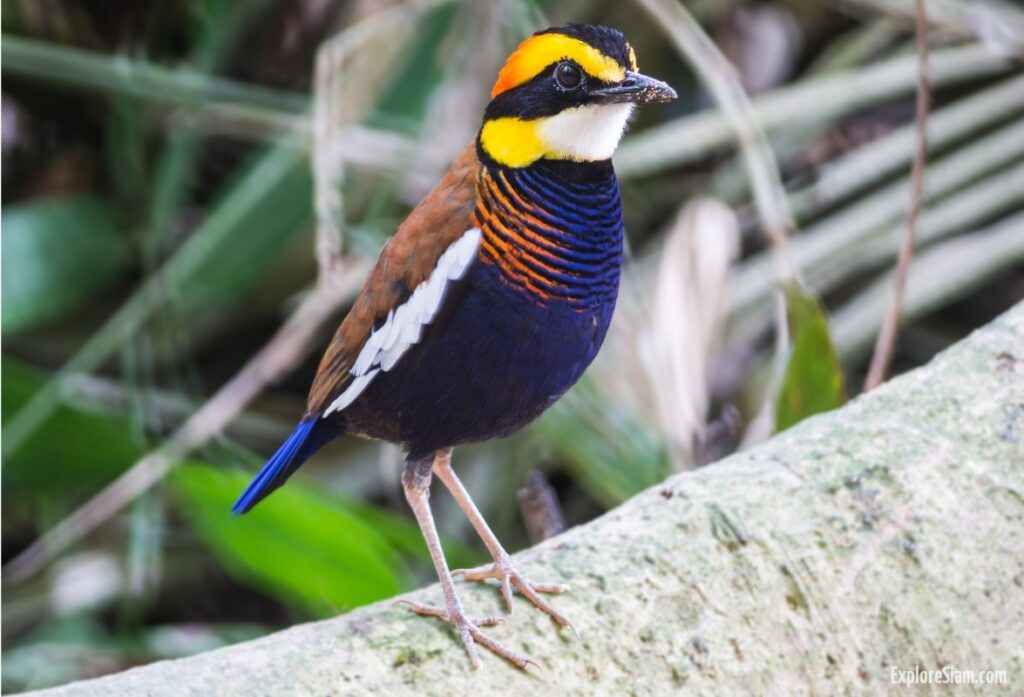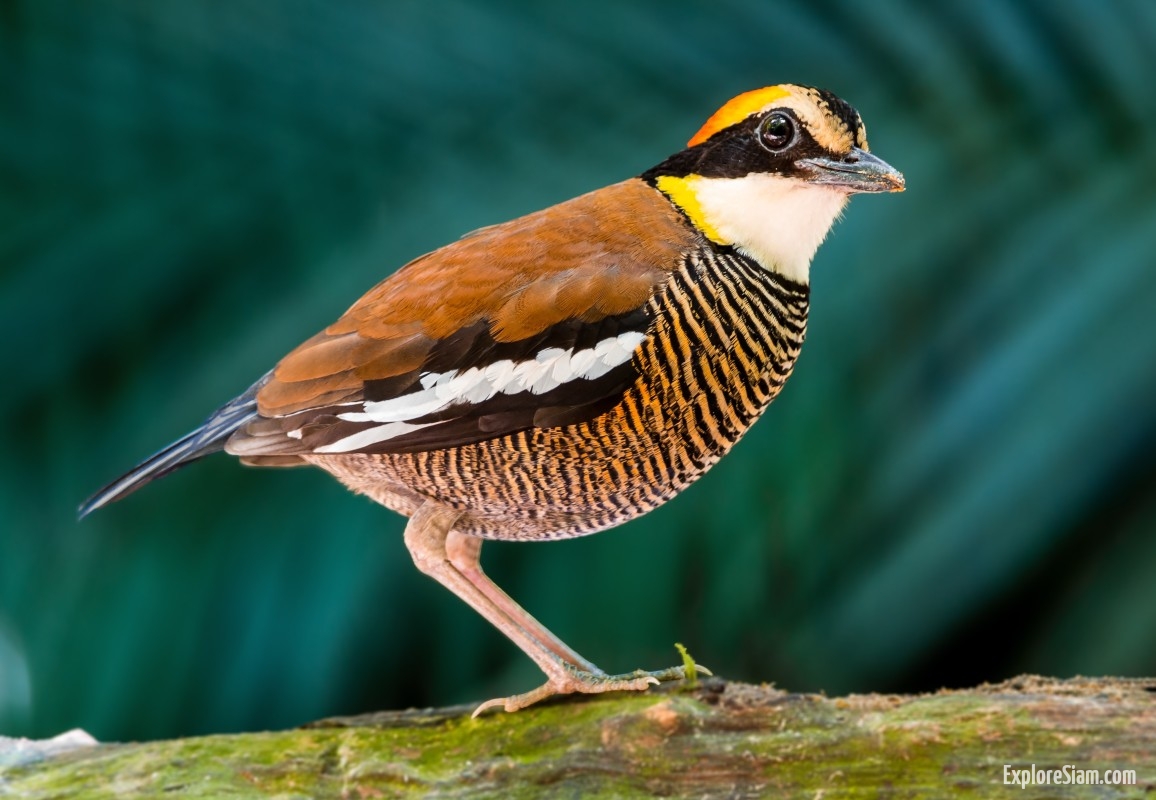Gurney’s Pitta (Hydrornis gurneyi) is one of the world’s most elusive and endangered bird species, primarily found in the dense lowland forests of Thailand and Myanmar. This bird, known for its strikingly vibrant plumage and unique habitat requirements, has become a symbol of both the fragility of tropical ecosystems and the urgent need for conservation efforts. As an emblem of avian biodiversity in Southeast Asia, Gurney’s Pitta’s story is one of rediscovery, decline, and the ongoing struggle for survival against numerous environmental challenges.
The Rediscovery of a Lost Species
For much of the 20th century, Gurney’s Pitta was considered possibly extinct. After its initial discovery in the late 19th century by British ornithologist John Gurney, sightings of the bird became exceedingly rare. It wasn’t until the 1980s that the species was rediscovered in southern Thailand, sparking renewed interest and concern among conservationists and ornithologists. This rediscovery, occurring after decades without confirmed sightings, was a profound reminder of the species’ precarious existence and highlighted the need for urgent conservation measures.
Habitat and Distribution
Gurney’s Pitta is primarily found in lowland evergreen forests, a habitat type that is increasingly under threat from deforestation and agricultural expansion. The bird’s historical range extended across the Malay Peninsula, but today it is largely confined to a few protected areas in southern Thailand and southern Myanmar. These regions are characterized by dense, moist forests with a thick understorey, which provide the necessary cover and feeding grounds for the species. The bird is highly dependent on a specific habitat niche, requiring dense ground cover and abundant leaf litter for foraging, making it particularly vulnerable to habitat destruction.

Physical Characteristics and Behavior
Gurney’s Pitta is renowned for its striking appearance. Males are particularly vibrant, with a bright blue crown, yellow belly, and an orange-yellow nape that contrasts sharply with its otherwise black head and back. Females, while less vividly colored, still exhibit a beautiful combination of olive-brown and pale yellow hues. These birds are ground dwellers, spending most of their time foraging for insects, snails, and other small invertebrates among the leaf litter of the forest floor. Their behavior is secretive, and they are known to be shy, making them difficult to spot even in their known habitats.
The Threats Facing Gurney’s Pitta
The primary threat to Gurney’s Pitta is habitat loss due to deforestation. Over the past several decades, the lowland forests of Thailand and Myanmar have been extensively cleared for rubber and palm oil plantations, as well as for timber and agricultural use. This destruction has led to a significant reduction in suitable habitat for the species. Additionally, fragmentation of the remaining forest patches has further isolated populations, reducing genetic diversity and increasing the risk of local extinctions. Other threats include illegal trapping and hunting, which, although not as significant as habitat loss, still pose a danger to the remaining populations.
Conservation Efforts and Challenges
Conservation efforts to save Gurney’s Pitta have been underway since its rediscovery in the 1980s. Various organizations have collaborated to establish protected areas and conservation programs aimed at preserving the remaining forest habitats and preventing further decline of the species. In Thailand, several national parks and wildlife sanctuaries, such as Khao Nor Chuchi, have been critical in safeguarding the bird’s habitat. However, these efforts face significant challenges, including insufficient funding, limited local support, and the ongoing pressures of illegal logging and land conversion.
The Role of Ecotourism and Local Communities
Ecotourism has emerged as a potential tool for the conservation of Gurney’s Pitta. By promoting bird-watching tours and other nature-based activities, local communities can benefit economically from preserving the bird’s habitat. This economic incentive can encourage local stakeholders to engage in and support conservation efforts. However, for ecotourism to be sustainable, it must be carefully managed to minimize disturbance to the birds and their habitat. Education and awareness programs are also crucial in fostering a sense of stewardship among local residents, highlighting the bird’s importance to biodiversity and the benefits of conservation.
The Importance of International Collaboration
The conservation of Gurney’s Pitta requires a concerted international effort, particularly between Thailand and Myanmar, where the bird’s remaining populations are found. Cross-border cooperation is essential for establishing contiguous protected areas and for coordinating habitat restoration projects. International funding and expertise can also play a vital role in supporting conservation initiatives, including scientific research, monitoring programs, and community-based conservation efforts. By sharing knowledge and resources, conservationists can develop more effective strategies to address the threats facing Gurney’s Pitta.
Future Prospects and the Path Forward
The future of Gurney’s Pitta remains uncertain, but there are reasons for cautious optimism. Continued conservation efforts, supported by international cooperation and local community engagement, offer the best chance for the species’ survival. Efforts to expand and connect protected areas, coupled with habitat restoration and sustainable land-use practices, could help stabilize and potentially increase the bird’s population. Moreover, advancements in ecological research and monitoring technologies provide valuable tools for understanding the species’ needs and for tracking the effectiveness of conservation strategies.
Gurney’s Pitta stands as a symbol of the challenges facing wildlife conservation in the 21st century. Its struggle for survival amid the rapidly changing landscapes of Southeast Asia underscores the urgent need for a holistic approach to conservation—one that integrates habitat protection, sustainable development, and community involvement. As one of the world’s rarest birds, Gurney’s Pitta not only captivates with its beauty but also inspires a global commitment to preserving the natural world. The fate of this elusive bird is a poignant reminder of what is at stake in the broader fight to protect our planet’s biodiversity.





